September 28, 2024 | 05:35 GMT +7
September 28, 2024 | 05:35 GMT +7
Hotline: 0913.378.918
September 28, 2024 | 05:35 GMT +7
Hotline: 0913.378.918
Hiep Thuan Agricultural Cooperative in Hiep Thuan commune, Hiep Duc district, Quang Nam province, was officially established nearly seven years ago. Unlike traditional agricultural cooperatives, Hiep Thuan was the first in Quang Nam to focus on the sustainable development of large timber forests. The cooperative's expertise and achievements over the years have demonstrated the effectiveness of its development direction against prevailing global trends.
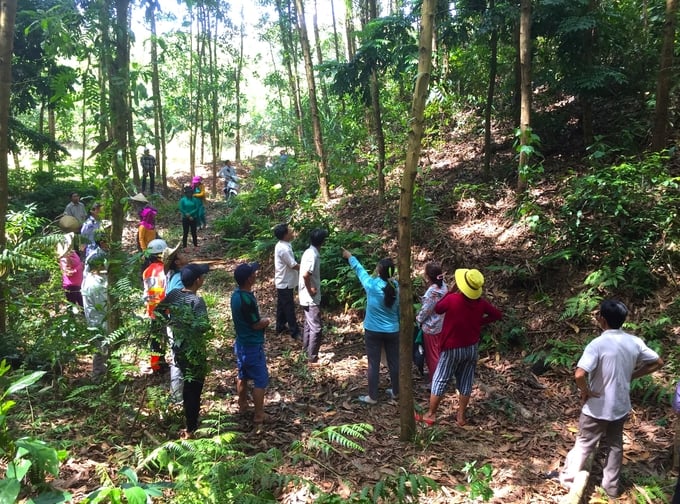
Local residents engaged in large timber forest plantation in collaboration with Hiep Thuan agricultural cooperative benefit from technical training in care and pest control. Photo: L.K.
We had the opportunity to visit Hiep Thuan Agricultural Cooperative over a year after its establishment. At the time, the cooperative's infrastructure was restricted, with its headquarters located in a small, four-room house. Due to limited funds, the Cooperative only invested in two small wood-splitting machines placed in a 280-square-meter workshop behind the office. Additionally, the cooperative's tools and equipment were disorganized.
Nguyen Huu Duong, Chairman of the Board of Directors and Director of Hiep Thuan Agricultural Cooperative, shared that their local mountainous advantage facilitated a focus on forestry development. However, due to a lack of experience, insufficient resources, limited local labor skills, and a passive approach to timing posed significant challenges during the Cooperative's early development stages.
However, the Cooperative has achieved notable successes through perseverance and determination on their chosen development direction, alongside local support and assistance from non-governmental organizations' forestry development projects. In just over a year of operation, the Cooperative assigned 15 members to manage approximately 200 hectares of forest. Among this area, 100 hectares received an FSC certification for sustainable forest management.
Hiep Thuan Agricultural Cooperative focuses on long-term goals, and accepts minimal short-term profits in order to gradually build trust with the local residents. Accordingly, participating households receive support with standardized forestry seedlings, technical training, and a secured market output for all products at prices higher than market rates. This policy has encouraged over 120 households from both within and outside the commune to collaborate with the Cooperative, managing nearly 750 hectares of forest by 2018.
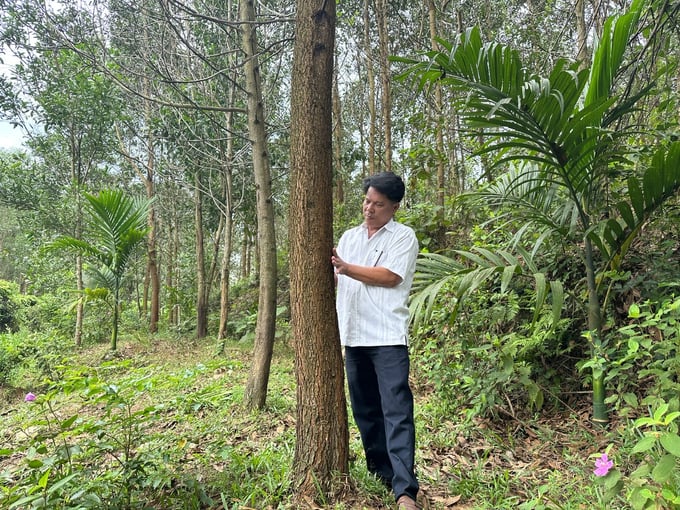
Large timber forests exhibit exceptional growth under effective management. Notably, the trunk circumferences reached over 60 centimeters within four years of management. Photo: L.K.
"In the following years, we continued to provide local residents with financial support for the certification procedures of their large timber forests. With certified forest areas, the locals can achieve higher purchasing prices than usual. As a result, more households have placed their trust in collaborating with our cooperative. Over time, they have also acknowledged the increased benefits from planting large timber forests compared to that of traditional methods," shared Chairman Duong.
According to Chairman Duong, if one hectare of acacia is harvested within three to four years, its timber can typically be priced at between 35 and 40 million Vietnamese dong. However, with the same area of acacia forest, cultivating large timber acacia for an additional three to four years can potentially yield over 200 million dong in profit. In addition to the high economic efficiency, FSC-certified large timber forestry contributes significantly to enhancing water retention capacity, reducing erosion and soil runoff, regulating hydrological cycles, protecting the environment and fostering sustainable forest development.
The multiple benefits from planting large timber forests have enabled Hiep Thuan Agricultural Cooperative to undergo significant transformation. With an additional investment of over 11 billion dong, the cooperative currently boasts a relatively spacious workshop system spanning over 5,000 square meters, equipped with various modern machinery such as automatic lathes, chippers, and grinders to facilitate wood processing stages.
With a growing credibility over the years, the Cooperative is currently managing over 1,400 hectares of production forests in collaboration with nearly 250 local households, providing a stable supply of raw materials for processing. Hiep Thuan Agricultural Cooperative exports between 600 and 800 tons of sawn timber and various other products to the market on an yearly basis, catering to multiple regions across the country.
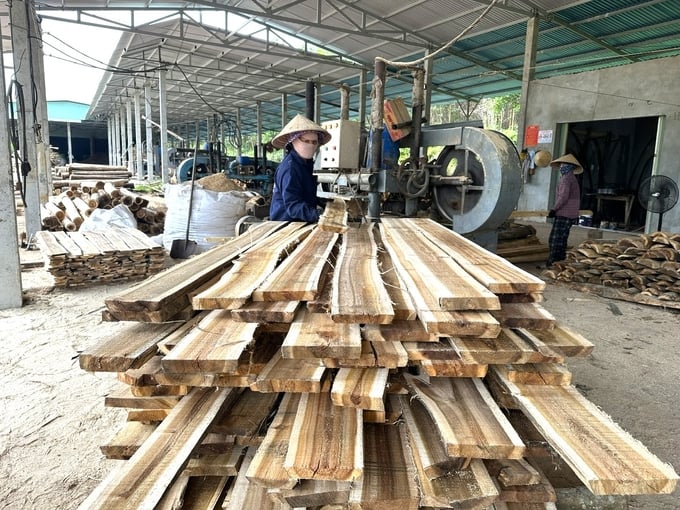
Hiep Thuan Agricultural Cooperative exports between 600 and 800 tons of sawn timber and various other products to the market on an yearly basis, generating a significant stream of revenue. Photo: L.K.
"Throughout our operations, we have faced numerous challenges, particularly when the timber market was affected by the Covid-19 pandemic. However, our activities remained relatively stable. The Cooperative only generated a few hundred million dong in profit annually during the early years; this figure gradually increased to several billion dong and finally reaching its peak at nearly 35 billion dong in 2021," recounted Chairman Duong.
According to Chairman Duong, strategic investments and compliance with established technical procedures have demonstrated the effectiveness of large timber forestry over the years. However, extending the harvesting stage can pose several risks, particularly in Quang Nam province, a region prone to frequent typhoon impacts. Consequently, the Cooperative has actively searched for solutions to mitigate these risks.
Following an agreement signed between Bao Minh Corporation (headquartered in Ho Chi Minh city) and Hillridge (an Australian insurance technology company) in March 2024, Hiep Thuan Agricultural Cooperative became the first customer of the Typhoon Index Insurance product. The insurance, funded by the United States Agency for International Development (USAID), provides coverage for period of one year.
"Losses are unwated, but unpredictable outcomes in forestry. Which is why we decided to trial the Typhoon Index Insurance for nearly 155 hectares of sustainably managed timber forests. With the current unpredictable weather conditions, insurance provides timely financial support in the event of disaster-related losses, allowing local residents to confidently invest in large timber forest development, thereby gradually improving incomes," Chairman Duong remarked.
Under the Typhoon Index Insurance package, the payout is calculated by multiplying the insurance premium by the loss index (measured in %) based on the distance from the typhoon's center to the insured property's coordinates at the time of the storm. Specifically, at a 25-kilometer distance, the loss index is 5% for category 10 and11 storms; and 10% for category 12 and 13 storms. At a 50-kilometer distance, the loss index is 25% for category 14 and 15 storms; and 50% for category 16 storms. At a 100-kilometer distance, the loss index is 50% for category 17 storms, and 100% for category 18 storms and above.
Translated by Nguyen Hai Long
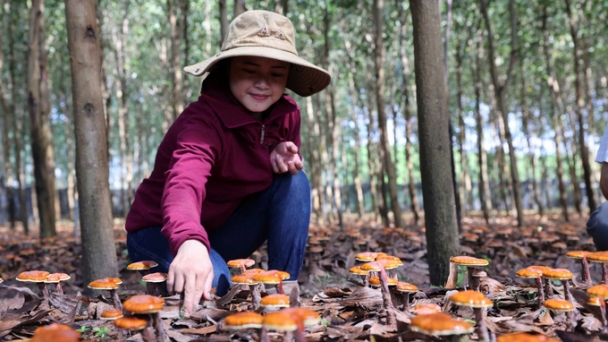
(VAN) After 3 months, the red Lingzhi mushrooms under the acacia canopy are ready for harvest. Selling at 30-35 USD/kg, each kg of dried mushrooms nets about 21 USD in profit.
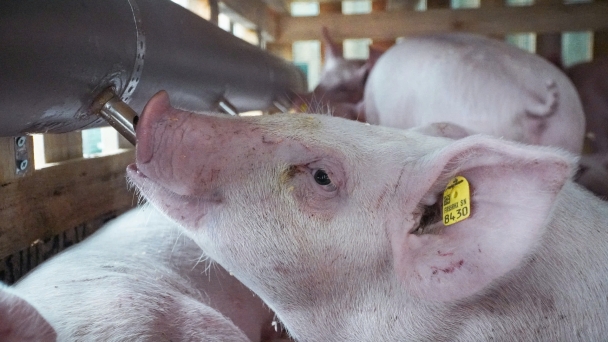
(VAN) De Heus Genetics has just welcomed a herd of Topigs Norsvin boars, a leading global brand in genetics, helping breeders optimize costs and increase profits.
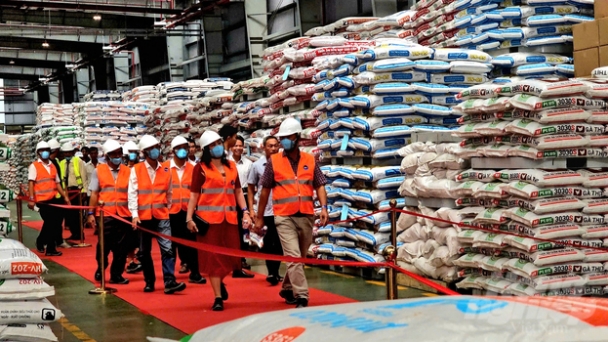
(VAN) On September 26, Aboitiz Foods Group launched the Gold Coin Feedmill Long An animal feed factory in Ben Luc district, Long An province, with a total investment of USD 45 million.

(VAN) 2,000 enterprises from 45 provinces and cities are collaborating to establish a green supply chain by connecting supply and demand with wholesale markets, popular retail corporations, and e-commerce platforms.
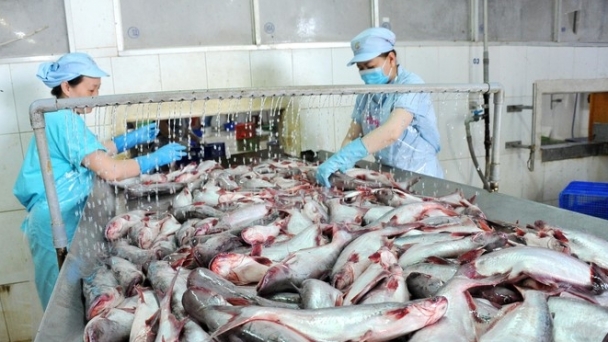
(VAN) A brand is not simply a name or logo but also the way that pangasius products are recognized and warmly received in the market.
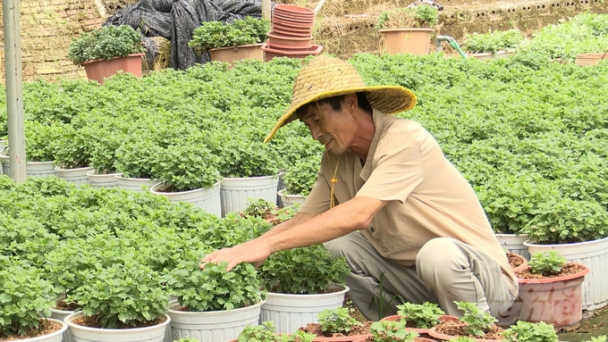
(VAN) Urban agriculture helps establish green spaces, increase oxygen levels, reduce greenhouse gas emissions, and provide a local source of food and produce.
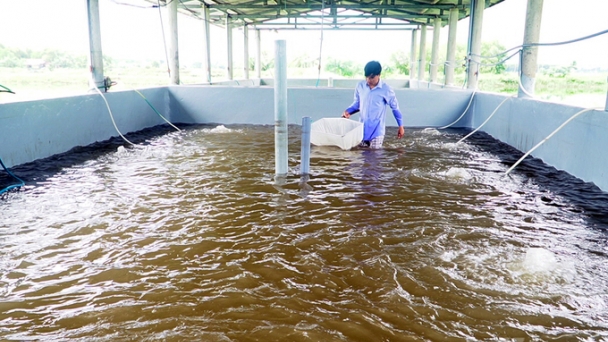
(VAN) High-tech shrimp farming continues to grow, whereas traditional shrimp farmers suffer losses due to climate change and environmental pollution.